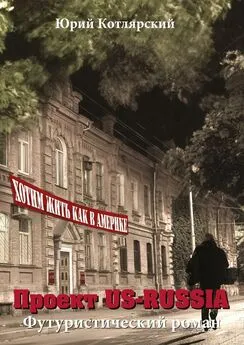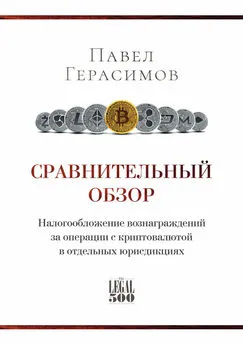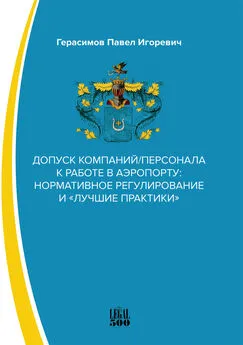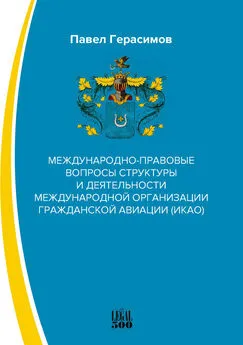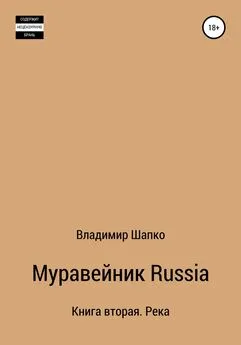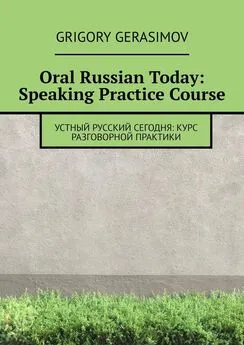Павел Герасимов - Russia 2022
- Название:Russia 2022
- Автор:
- Жанр:
- Издательство:неизвестно
- Год:неизвестен
- ISBN:978-5-00149-786-8
- Рейтинг:
- Избранное:Добавить в избранное
-
Отзывы:
-
Ваша оценка:
Павел Герасимов - Russia 2022 краткое содержание
Russia 2022 - читать онлайн бесплатно ознакомительный отрывок
Интервал:
Закладка:
Pavel Gerasimov
Russia 2022
Introduction
Geography
RUS-000
Russia, the major part of the former Soviet Union, is located in Eurasia, bordering the Arctic Ocean, between Europe and the North Pacific Ocean. With a total area of 17,075,200 square km, of which land is 16,995,800 square km and water is 79,400 square km, Russia is now the largest country in the world by territory. Its land boundaries stretch as far as 20,017km. Russia’s border countries are Azerbaijan, Belarus, China, Estonia, Finland, Georgia, Kazakhstan, North Korea, Latvia, Lithuania, Mongolia, Norway, Poland and Ukraine. Its coastline is 37,653km, its territorial sea is 12nm, its exclusive economic zone is 200nm and its continental shelf is 200m depth or to the depth of exploitation.
These numbers do not include the Republic of Crimea and the city of Sevastopol due to the lack of uniformity of the international recognition of the accession of said territories by Russian Federation in 2014. Still, in Russian legislation the Republic of Crimea and the city of Sevastopol are regarded as the integral parts of Russian Federation, even though due to their turbulent international legal status some local legislative acts and law enforcement practices may deviate.
Climate in Russia ranges from steppes in the south to humid continental in much of European Russia and subarctic in Siberia to tundra climate in the polar north. Winters are cool along the Black Sea coast and frigid in Siberia. Summers are warm in the steppes and cool along Arctic coast. Terrain is mostly plain with low hills west of Urals. There is vast coniferous forest and tundra in Siberia, uplands and mountains are along southern border regions. The lowest point in Russia is Caspian Sea at 28m, and the highest mountain is Elbrus, 5,633m, which is also the tallest peak in Europe.
Russia has a wide range of natural resources including oil, natural gas, coal, minerals and timber. However, there are climatic impediments to the exploitation of these resources: permafrost, spring floods and summer/autumn forest fires in Siberia; a too dry or too cold climate; and a lack of proper soil for agriculture.
Russia is party to a number of international agreements on environment: Air Pollution, Air Pollution – Nitrogen Oxides, Air Pollution – Sulfur 85, Antarctic – Environmental Protocol, Antarctic – Marine Living Resources, Antarctic Seals, Antarctic Treaty, Biodiversity, Climate Change, Climate Change Kyoto Protocol, Paris Agreement, Endangered Species, Environmental Modification, Hazardous Wastes, Law of the Sea, Marine Dumping, Ozone Layer Protection, Ship Pollution, Tropical Timber 83, Wetlands and Whaling.
Currency
General
RUS-025
The national currency is the Russian ruble, which consists of 100 kopecks. The currency code is RUR. Exchange rates for December 19, 2020 were: Russian rubles per US $1–73.23; Russian rubles per UK £1–99.27; Russian rubles per €1–89.83.
National Holidays
General
RUS-050
January 1–2 – New Year; January 7 – Orthodox Christmas; February 23 – Defenders of the Motherland Day; March 8 – International Women’s Day; May 1 – Labour Day; May 9 – Victory Day; June 12 – Independence Day; November 4 – National Unity Day.
Political System
RUS-075
The main issue of the political transformation in the last three decades in Russia has been the legitimation of State power in society. The first time Russia faced similar problems was at the cusp between the 16th and 17th centuries when, after murder of Prince Dimitry, the major branch of the ruling dynasty of Ryurickovich ceased to exist. A new monarch, Boris Godunov, had “no God-given right to rule” in the eyes of common Russians and had to find a way to secure support in society. An attempt to legitimise power through the State Council where top clergy and dignitaries and more than 500 representatives from all over Russia were present was not particularly successful. Russia went into a long period of social disturbance and complete disintegration of state. The next similar crisis followed Nicholas II’s abdication from the throne in February 1917. The February Revolution destroyed monarchy as such. It appeared that Russia was not ready for the democratic reorganisation of society during the World War I, and the radical party of Bolsheviks took over the State. They founded their power on promise of peace and prosperity to war-torn people which was based on the communistic ideology, charisma of leaders and the following terror.
Today’s political structure in Russia was not formed according to a predetermined plan; rather, it is the result of short-term trends of political rivalry. It is, therefore, important to consider not only how the system works on a functional level, but why it operates like that.
Mikhail Gorbachev, the last leader of the Communist Party of the USSR, realized that his power was not unlimited. It was strong enough to keep up the communist regime, but it was not for the transformation of the country. He needed sources of support in society, and so the system of free election to the councils of people’s delegates was implemented. In the Soviet Union councils of people’s delegates possessed the supreme power de jure, but in reality all power belonged to the Communist Party and the system of ispolkoms, executive bodies acting under the party’s control. The idea was that the elected councils of people’s delegates would weaken the Communist Party and support reforms. At the same time it was a way to preserve succession to the Soviet State. However, as the councils of people’s delegates were originally designed as a mere window dressing for the power of the Communist Party, they were incapable to act in the real world and only accelerated the disintegration of the Soviet Union.
At the beginning of 1991 the first President of Russia, Boris Yeltsin, was in conflict with the federal center. For him, a President elected directly by all citizens was a way to secure public support amidst this rivalry. The presidency was quite a new idea to Russian political life, and at the same time it was a move towards tradition for Russian personified power. The system, however, soon caused conflict between the President on one side and the Supreme Council, the Assembly of the People’s Delegates, the legislative bodies and the vice-president on the other. The Supreme Council had the advantage in terms of legal power. Nevertheless in 1993 president Yeltsin managed to end the two-year rivalry by a series of non-constitutional acts, starting from the order for the dismissal of the Supreme Council and the Assembly of the People’s Delegates and ending with an armed storm of the building with delegates.
RUS-100
As a result of Russia’s turbulent history, the political system established by the Constitution of 1993 provides the President with substantial superiority over other branches of the state. The position of vice-president was abolished. The State Duma, the successor of the Supreme Council, became the lower chamber of the Parliament with very limited capacities. It lost control over the executive branch and could only approve or disapprove a Prime Minister suggested by the President. However, even this possibility is limited. After three consecutive disapprovals of his candidate, a President can dismiss the State Duma. A President is entitled to veto laws approved by the Duma. This veto can only be overcome by the qualified majority of the Duma members. Judges of the Constitutional Court are appointed by the Council of the Federation (the upper chamber of the Parliament), but only from those candidates introduced by the President. A similar procedure has been established as regards the heads of other judicial bodies. The procedure for amending the constitution has become practically impossible without the President’s consent. Similarly, the impeachment of the President, theoretically possible under the current constitution, is hardly achievable in practice.
The President is elected for a term of six years by the citizens of the Russian Federation on the basis of general, equal and direct vote by a secret ballot. No one may hold the office of President for more than two terms in succession; still, being a president for more than two times total is legally possible. A candidate for the President of the Russian Federation can be nominated by a political party (or electoral block) or by the candidate personally. In the later case the candidate must have an initiative group of 500 supporters. An electoral block or an initiative voters’ group that has nominated a candidate for the office of the President must collect no less than 300,000 voters’ signatures in support of the candidate, with no more than 7,500 signatures falling on one subject of the Russian Federation. (A candidate nominated by a political party that is represented in the Parliament does not need to collect signatures). Political parties not represented in Parliament will have to collect only 100,000 signatures in support of their candidates, and independent candidates will have to provide 300,000 such signatures.
Russian law restricts the amount of candidates’ expenditures for the election campaign. At present no more than RUR 400 million (around £3.9 million), or RUR 500 million (around £4.9 million) in the case of a two-round election, can be spent. A candidate cannot accept money for financing his or her campaign from foreign or international organisations or individuals, persons without citizenship, minors, domestic companies with foreign shareholders, charities and State or municipal bodies. A candidate who receives more than one half of the votes is considered elected. If no candidate is elected in the first round, the Central Election Commission sets the second round of election for the two candidates who received the greatest number of votes. A candidate who received the greater number of voters in the second round as compared with the number of votes cast for another candidate is considered elected, provided that the number of votes cast for this candidate is greater than the number of votes cast against all candidates.
The Federal Assembly, the Parliament of the Russian Federation, is the supreme legislative body of the Russian Federation. The Federal Assembly consists of two chambers: the Federation Council and the State Duma. The State Duma is elected for a term of four years. It consists of 450 deputies. From 2007 all deputies are elected in proportion to the number of votes cast for the lists of candidates nominated by political parties. The Federation Council consists of two representatives from each subject of the Federation, one from the representative and one from the executive bodies of the State authority.
Deputies to the Federation Council and deputies to the State Duma possess immunity throughout their term in office. A deputy may not be detained, arrested or searched except when detained in the act of perpetrating a crime, and may not be subject to personal search except when such search is authorised by law to ensure safety of other people. The question of stripping a deputy of immunity is decided on the recommendation of the Prosecutor-General of the Russian Federation by the corresponding chamber of the Federal Assembly.
The Government consists of the Chairman of the Government, the Deputy Chairman of the Government and federal ministers. The Chairman is appointed by the President with consent of the State Duma. If the State Duma thrice rejects candidates for the Chairman of the Government nominated by the President, the President appoints a Chairman of the Government, dissolves the State Duma and calls a new election.
Читать дальшеИнтервал:
Закладка:





